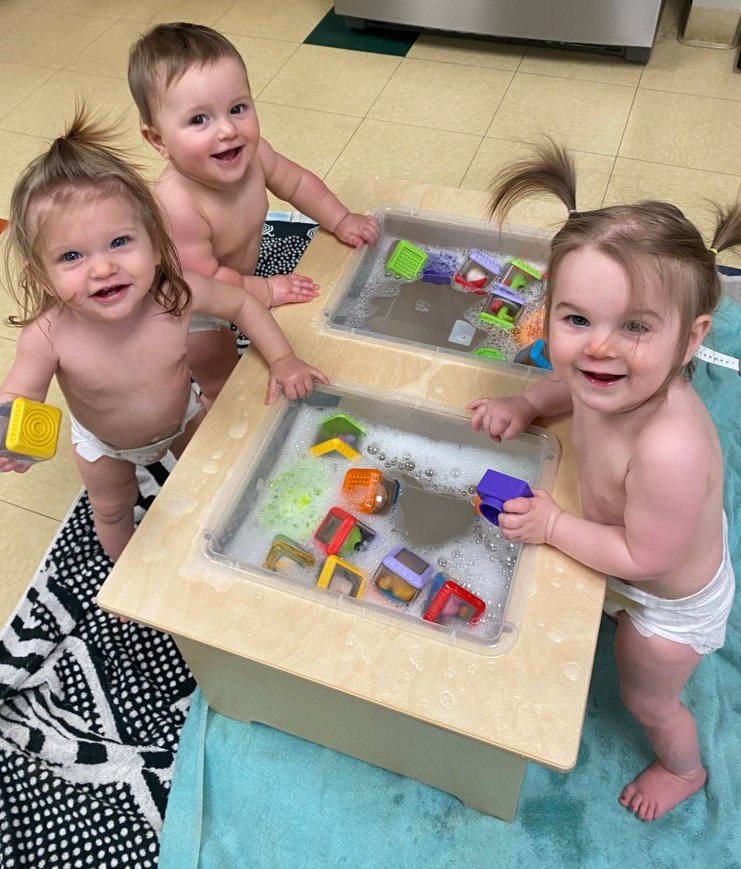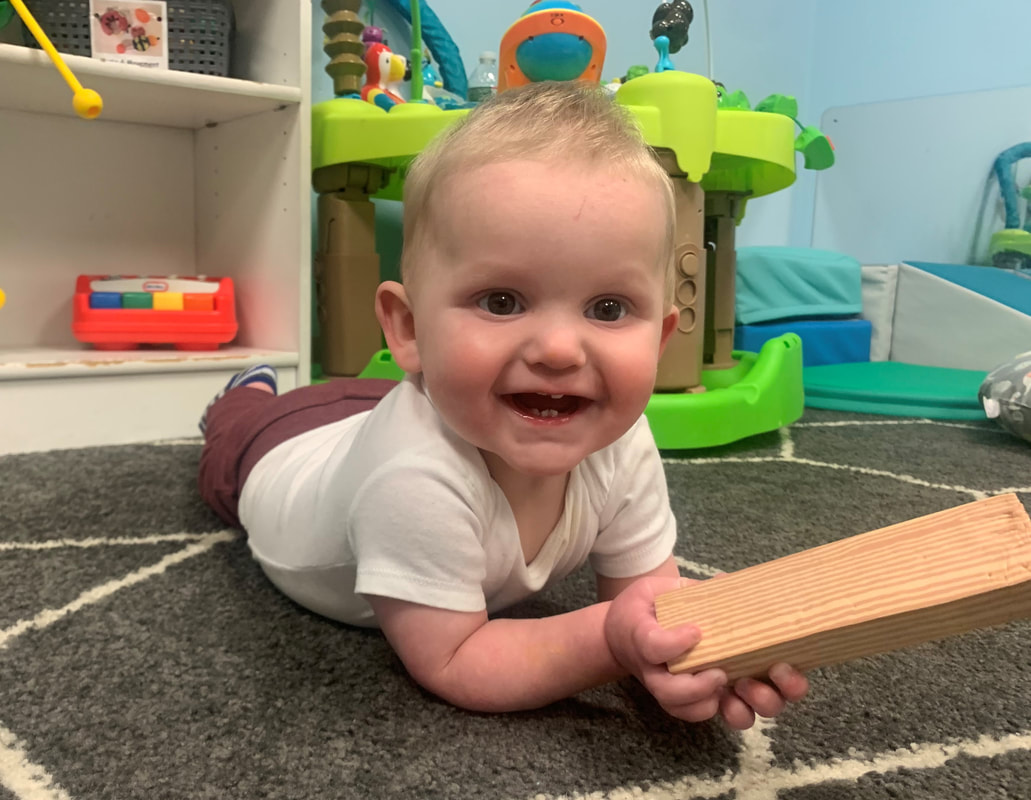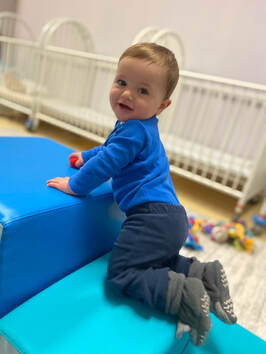Infant Curriculum
|
The infants in our care are exposed to a wide variety of toys, tools, and activities to engage their interest, make the day fun, and help them develop physically and cognitively.
Incorporating reading, music, and developmental play into responsive care giving helps infants begin to acquire language skills and understand concepts such as trust, time, cause and effect, and self-identity. |
Younger Infants
In an open cushioned area, younger infants are able to practice lifting their heads, rolling over and from side to side, sitting with support, hand clasping, and kicking. Moving objects and colorful toys are placed to help infants develop visual focus, tracking, and hand-eye coordination. Sensory stimulation sparks infants’ cognitive development. Rattles and dumping toys give them auditory stimulation and begin to teach them cause and effect. Teachers play or sing variously upbeat or soothing music throughout the day during feeding time, playtime, and diaper changing time. During playtime, babies are encouraged to move their legs and arms to the beat of the music. Cradling and comforting babies is a major priority in the infant room. Having their needs met by compassionate caregivers helps infants learn trust, advancing their social and emotional growth. Older Infants Older infants use our open cushioned area for physical play such as crawling on their stomach and creeping on their hands and knees. They can also sit while playing with balls, sensory and teething toys, stuffed animals, and electronic learning toys that promote thumb and forefinger practice. The area also offers babies the opportunity to pull themselves up, stand holding onto padded equipment, and begin walking without fear of falling on a hard surface. Teachers patiently encourage older infants to repeat the process of throwing or dropping objects to learn cause and effect, while mirror play helps them develop self-identity. Eating and nap time begin to occur at regular times based on the baby’s needs. Cups and eating utensils are introduced to have babies become more self-sufficient in feeding themselves. At this age, infants begin to play independently and eye contact begins to replace some of the physical contact that younger infants seek. Older infants are encouraged to repeat two-syllable sounds and begin to practice making sounds into understandable words. Reading time, including books designed for handling by infants, engages all five senses. Older infants also begin to test their boundaries by learning what is and is not allowed. Teachers make clear what is acceptable by modeling appropriate behavior. Verbal praise helps older infants learn to respond to their name and develop confidence in their abilities. |



